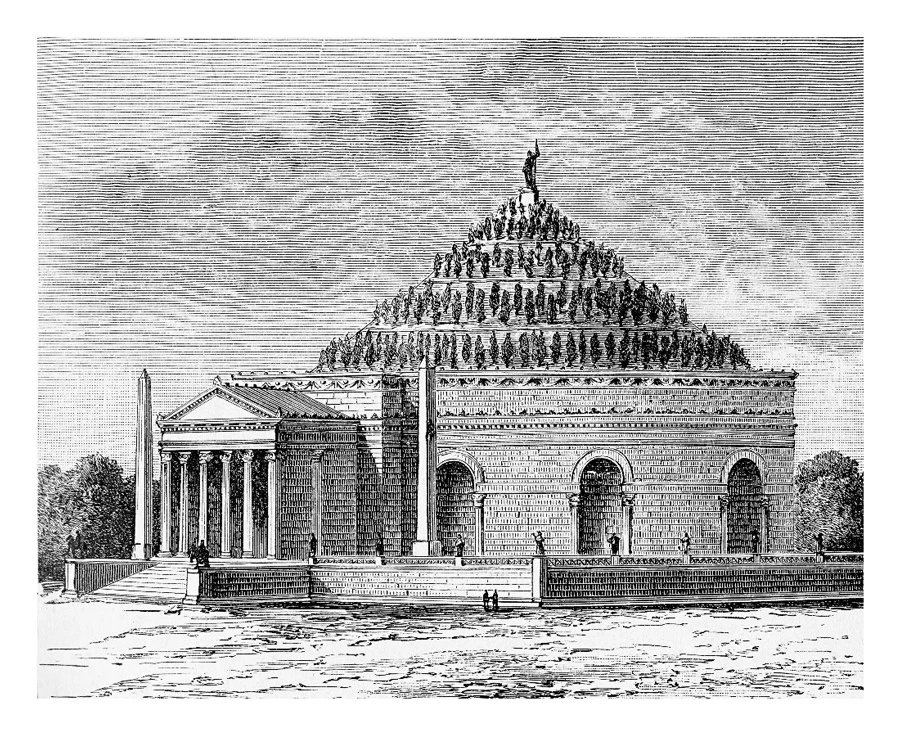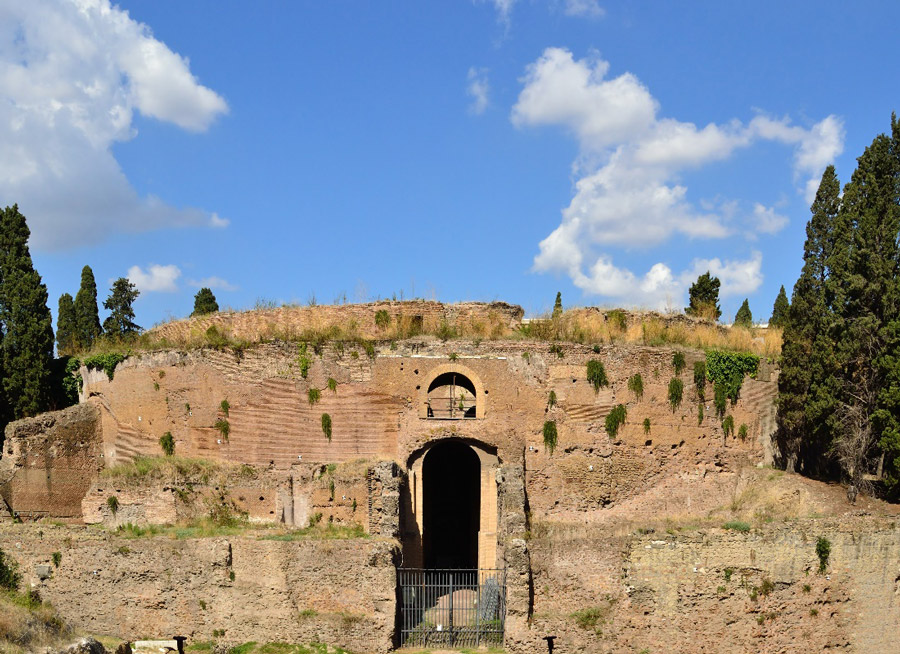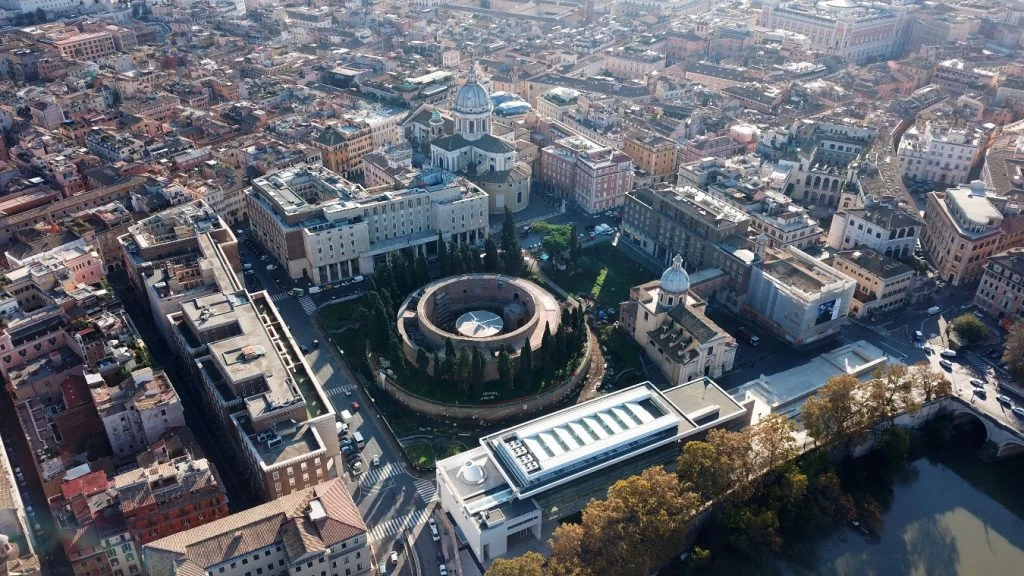In the heart of the modern city of Rome, close by the river Tiber, stands a huge, circular building constructed of earth and brick. This imposing structure is the Mausoleum of Augustus, constructed by the first Roman emperor Octavian Augustus in 28 BC.
It is located on the Campus Martius or the Field of Mars near Via di Ripetta which runs along the Tiber river. It is on the grounds between the Ara Pacis Museum and San Carlo al Corso church. Close to the famous Pantheon, which it predates, it is one of the most famous buildings in ancient Rome.
After standing empty for decades, it finally housed the remains of the Emperor after he died in 14 AD. Augustus had been inspired to create such a large tomb after visiting Alexander the Great’s tomb in Alexandria. The tomb was meant for his family members, close confidants, and his successors from what would become the Julio-Claudio dynasty.
Restored and reopened in 2021, it can now be seen in all its glory for the first time in almost a thousand years. But why is there only one mausoleum? Where are the great tombs of the other early Roman Emperors?
A Neglected Roman Treasure
The great tomb of Augustus is the largest in the Roman world, standing 138 feet (42m) high and 295 feet (90m) in diameter. It was a project started by Augustus after his victory against the insurrectionist Antony and Cleopatra in the Battle of Actium in 31 BC.
Surrounded by modern public parks, it is laid out in a circular manner with concentric rings of brick and earth, covered with travertine limestone. The roof of the structure is conical and planted with cypress tress, surmounted by a bronze statue of Augustus.
There are two pillars with bronze plaques on each side of the entrance where the Res Gestae Divi Augusti is inscribed. This inscription lists the victories and accomplishments of Augustus over his long reign as Emperor.

There were originally two pink granite obelisks on each side of the arched entryway, although both of these were later removed to other locations in Rome. One granite obelisk now stands in Piazza dell’Esquilino, and the other is at Quirinal fountain.
From the entryway, a corridor leads directly into the main central chamber of the Mausoleum. And here you will find the answer to the puzzle of the Roman Emperors: the chamber consists of three areas designed to hold the golden urns of the Imperial Family ashes.
Roman Emperors, like their citizens, were cremated. Augustus had intended the building to house not just himself, but the line of Emperors and his family that came after him. Till 217 CE, the Mausoleum was utilized in this way. But after the reign of Hadrian, the tomb of Augustus lost importance and fell out of use.
History of the Mausoleum
Like many other ancient monuments and sites, the Mausoleum of Augustus also has an epic history. After 217 AD, the building remained untouched until it was likely desecrated and looted by the conquering Visigoths in 410 AD, falling into ruin.
During the 12th century, the ruling Colonna princes fortified the entire structure in a similar manner to Hadrian’s Mausoleum, which was converted to a fortress during this time. In 1241, the Colonna family was expelled by Pope Gregory IX, and he destroyed the building to prevent its re-use as a fortification.
During the 18th century the prominent Soderini family bought the Mausoleum and made an ornate garden inside the enclosure. The place was used for staging bullfights, as well as theatrical and circus performances.
In between 1907 and 1936, the inner enclosure was turned into a concert hall named the Augusteo which could hold 3,500 people. Benito Mussolini, then Prime Minister of Italy, put an end to the concerts as he felt this was not a fitting use for the Mausoleum, and the last concert was performed on 13 May in 1936.

Mussolini planned for the restoration of the Mausoleum, as part of his vision of a new era of Italian dominance harking back to the glory of the Roman Empire.
Restoration
In 2014, a plan was announced to restore the structure to commemorate the 2000th anniversary of the death of Augustus. However, this plan failed due to financial shortfalls. The Mausoleum at this point was overgrown with vegetation and in a sorry state, remaining closed to the public and half-forgotten.
But three years later in 2017 it was announced that owing to a risk of collapse, a restoration of the ancient building would indeed begin. Out of the 140,000 square footage (13,000 sq. Meter) of walls, half can trace their origin back to Augustus’s time, with the others dating back to Mussolini’s 1930s restoration work. There are also the remains of additional walls added during the Renaissance, which were also preserved.
The entire restoration project included two phases: an initial consolidation phase aimed at stabilizing the structure, followed by an enhancement phase. Work on the first phase began on 31 October 2016 with the removal of 153 archaeological remains, still in-situ.
All vegetation was eliminated from the walls, and the entire site was cleared and cleaned. The top of the Mausoleum was covered with a protective material layer to prevent the rainwater from ruining the architecture. Many spaces were water-proofed, and floors were repaired and sealed.
This restoration work means that the Mausoleum of Augustus has been opened to the public for the first time in living memory. The revitalized Mausoleum incorporates an exhibition of multi-media with images of ancient and modern Rome shown on the structure’s walls.
So, Who is in the Mausoleum?
Sadly, the ravages of the Visigoths resulted in the loss of almost all of the remains interred within. But the records show that the Mausoleum was a place of heartbreak for the Emperor who ordered it built.

In three niches inside the chambers Augustus’s immediate family members were placed. The Emperor’s son-in-law Marcus Agrippa, nephew Marcellus, and sister Octavia, as well as his step-son and two grandsons were all interred in the Mausoleum before him.
Augustus’s wife Livia, who outlived the Emperor, was placed alongside him when she died. The Mausoleum also held the notorious Emperor Caligula, and his successor Claudius, the fourth Roman Emperor. Many more members of the Imperial family were also placed in the Mausoleum.
Although these original remains may be long gone, the newly restored Mausoleum of Augustus can at last take its place among the first rank of the architecture of Ancient Rome.
Top Image: The restored Mausoleum. Source: MumblerJamie / CC BY-SA 2.0.
By Bipin Dimri.